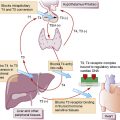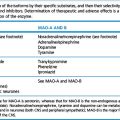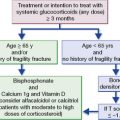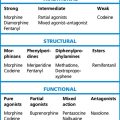Chapter 1 Clinical pharmacology
The use of drugs1 to increase human happiness by elimination or suppression of diseases and symptoms and to improve the quality of life in other ways is a serious matter and involves not only technical, but also psychosocial considerations. Overall, the major benefits of modern drugs are on quality of life (measured with difficulty), and exceed those on quantity of life (measured with ease).2 In some situations we can attempt both objectives.
But during the intervals remaining, an average family experiences illness on 1 day in 4 and between the ages of 20 and 45 years a lower-middle-class man experiences approximately one life-endangering illness, 20 disabling (temporarily) illnesses, 200 non-disabling illnesses and 1000 symptomatic episodes: the average person in the USA can expect to have about 12 years of bad health in an average lifespan,3 and medicines play a major role: ‘At any time, 40–50% of adults [UK] are taking a prescribed medicine.’4
Over the centuries humans have sought relief from discomfort in ‘remedies’ concocted from parts of plants, animals and other sources; numerous formularies attest to their numbers and complexity. Gradually, a more critical view emerged, recognising the need for proper investigation of medications. In 1690, John Locke5 was moved to write, ‘we should be able to tell beforehand that rhubarb will purge, hemlock kill, and opium make a man sleep …’.
Increasingly large numbers of substances will deserve to be investigated and used for altering physiology to the advantage of humans. With all these developments, and their potential for good, comes capacity for harm, whether inherent in the substances themselves or resulting from human misapplication. Successful use of the power conferred (by biotechnology in particular) requires understanding of the growing evidence base of the true consequences of interference. The temporary celebrity of new drugs is not a new phenomenon. Jean Nicholas Corvisart6 (1755–1821) reputedly expressed the issue in the dictum: ‘Here is a new remedy; take it fast, as long as it still works’.
The drug and information explosion of the past six decades, combined with medical need, has called into being a new discipline, clinical pharmacology.7 The discipline finds recognition as both a health-care and an academic specialty; indeed, no medical school can be considered complete without a department or sub-department of clinical pharmacology.
A signal pioneer was Harry Gold8 (1899–1972), of Cornell University, USA, whose influential studies in the 1930s showed the qualities needed to be a clinical pharmacologist. In 1952, he wrote in a seminal article:
Clinical scientists of all kinds do not differ fundamentally from other biologists; they are set apart only to the extent that there are special difficulties and limitations, ethical and practical, in seeking knowledge from man.9
More detailed aspects comprise:
1 Baber N.S., Ritter J.M., Aronson J.K. Medicines regulation and clinical pharmacology. Br. J. Clin. Pharmacol.. 2004;58(6):569–570. (and other articles in this issue)
2 Dollery C.T. Clinical pharmacology – the first 75 years and a view of the future. Br. J. Clin. Pharmacol.. 2006;61:650–665.
3 FitzGerald G.A. Clinical pharmacology or translational medicine and therapeutics: reinvent or rebrand and expand? Clin. Pharmacol. Ther.. 2007;81(1):19–20.
4 Honig P. The value and future of clinical pharmacology. Clin. Pharmacol. Ther.. 2007;81(1):17–18.
5 Laurence D.R. Ethics and law in clinical pharmacology. Br. J. Clin. Pharmacol.. 1989;27:715–722.
6 Rawlins M.D. Pharmacopolitics and deliberative democracy. Clin. Med. (Northfield Il). 2005;5:471–475.
7 Reidenberg M.M. A new look at the profession of clinical pharmacology. Clin. Pharmacol. Ther. 2008;83(2):213–217. (and other articles in this issue)
8 Waldman S.A., Christensen N.B., Moore J.E., Terzic A. Clinical pharmacology: the science of therapeutics. Clin. Pharmacol. Ther.. 2007;81(1):3–6.
1 A World Health Organization scientific group has defined a drug as ‘any substance or product that is used or intended to be used to modify or explore physiological systems or pathological states for the benefit of the recipient’ (WHO 1966 Technical Report Series no. 341:7). A less restrictive definition is ‘a substance that changes a biological system by interacting with it’. (Laurence DR, Carpenter J 1998 A dictionary of pharmacology and allied topics. Elsevier, Amsterdam, p 106)
A drug is a single chemical substance that forms the active ingredient of a medicine (a substance or mixture of substances used in restoring or preserving health). A medicine may contain many other substances to deliver the drug in a stable form, acceptable and convenient to the patient. The terms will be used more or less interchangeably in this book. To use the word ‘drug’ intending only a harmful, dangerous or addictive substance is to abuse a respectable and useful word.
2 Consider, for example, the worldwide total of suffering relieved and prevented each day by anaesthetics (local and general) and by analgesics, not forgetting dentistry which, because of these drugs, no longer strikes terror into even the most stoical as it has done for centuries.
3 Quoted in: USA Public Health Service 1995.
4 George C F 1994 Prescribers’ Journal 34:7. A moment’s reflection will bring home to us that this is an astounding statistic which goes a long way to account for the aggressive promotional activities of the highly competitive international pharmaceutical industry; the markets for medicines are colossal.
5 Locke J 1690 An Essay Concerning Human Understanding. Clarendon Press, Oxford, book iv, chapter iii, p. 556. The English philosopher John Locke (1632–1704) argued that all human knowledge came only from experience and sensations.
6 He was Emperor Napoleon’s favourite physician.
7 The term was first used by Paul Martini (1889–1964). He addressed issues that are now integral parts of clinical trials, including the use of placebo, control groups, sample size, relationship between dose and response, probability of efficacy. His monograph Methodology of Therapeutic Investigation (Springer, Berlin, 1932), was published in German and went largely unnoticed by English speakers. (Shelly J H, Baur M P 1999 Paul Martini: the first clinical pharmacologist? Lancet 353:1870–1873).
8 Gold H 1952 The proper study of mankind is man. American Journal of Medicine 12:619. The title is taken from An Essay on Man by Alexander Pope (English poet, 1688–1744), which begins with the lines: ‘Know then thyself, presume not God to scan,/The proper study of mankind is man’. Indeed, the whole passage is worth appraisal, for it reads as if it were relevant to modern clinical pharmacology and drug therapy.
9 Self-experimentation has always been a feature of clinical pharmacology. A survey of 250 members of the Dutch Society of Clinical Pharmacology evoked 102 responders of whom 55 had carried out experiments on themselves (largely for convenience) (van Everdingen J J, Cohen A F 1990 Self-experimentation by doctors. Lancet 336:1448). A spectacular example occurred at the 1983 meeting of the American Urological Association at Las Vegas, USA, during a lecture on pharmacologically induced penile erection, when the lecturer stepped out from behind the lectern to demonstrate personally the efficacy of the technique (Zorgniotti A W 1990 Self-experimentation. Lancet 36:1200).






